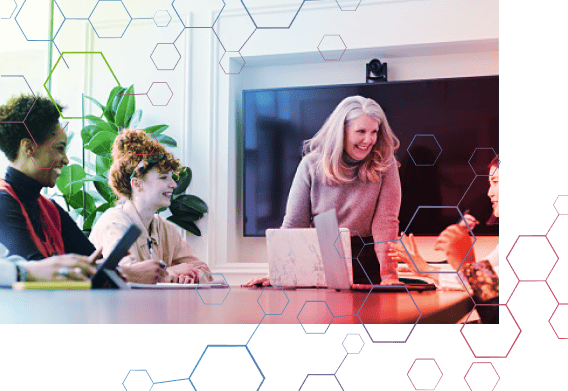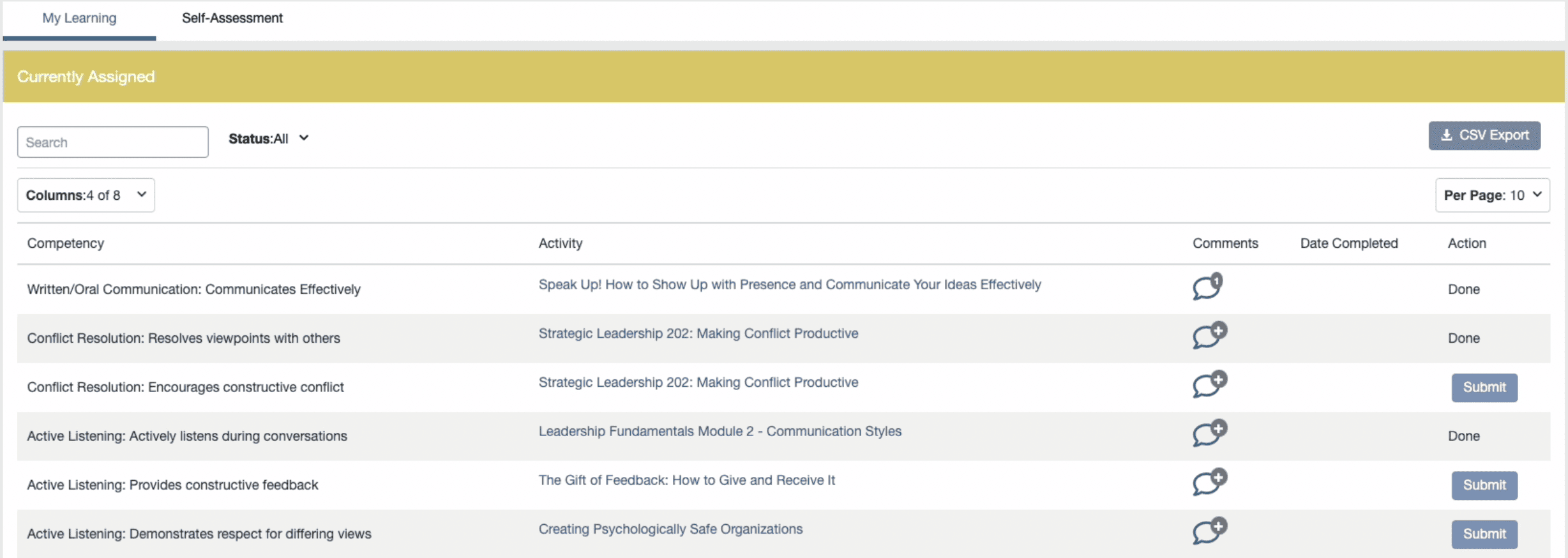
Take your leadership skills to the next level with SWE’s all new Leadership Competency Model (LCM)
When you take the LCM assessment, the system identifies the critical knowledge, skills, and abilities that a leader committed to SWE’s mission should strive for and builds an individualized learning plan to help you reach your potential.
If you’re looking to pursue leadership positions with SWE — everything from committee member to board of directors — or just want to help advance your career, log in and take the SWE Leadership Competency Model today!

What Leadership Areas Are Assessed?
The SWE Leadership Competency Model consists of six competencies, click the tabs below to learn more.
Self-management:
The ability to manage your behaviors, thoughts and emotions in a conscious and productive way
Commitment to growth:
Expanding beyond your comfort level to improve in a consistent and continual way
Personal organization:
The process of structuring, systematizing and improving your efforts to be more effective, efficient and productive
Adaptability:
Your ability to adjust to different conditions or circumstances
Professionalism:
The conduct or qualities that characterize a working professional or volunteer
Coaching:
To help a person change and head in the direction they desire to go in
Mentoring:
The act or process of helping and giving advice to a less experienced person
Sponsorship:
The function of a person who supports or helps another person
Change management:
A process for leading change to achieve a desired outcome
Vision:
A mental image of what an organization could be in the future
Decision-making:
A process which results in the selection of a course of action among several possibilities
Influencing others:
Your ability to affect the character, behavior or development of someone
Written and oral communication:
The exchange of information between people and/or groups
Conflict resolution:
The process by which two or more parties facilitate a peaceful solution to a disagreement
Active listening:
A communication skill involving listening with all senses to improve mutual understanding
Giving and receiving feedback:
A two-way process of sharing and receiving constructive suggestions on areas of strength and opportunities for growth
Management of others:
Your ability to lead and develop team member
Project management:
The use of specific knowledge, skills, tools and techniques to deliver something of value
Strategic planning:
The process of setting goals and creating a blueprint for an organization’s future
Financial acumen:
Your ability to see the financial effects and relationships of various aspects of the organization
Awareness of DEI&B concepts:
Your knowledge and understanding of key concepts related to DEI&B
Commitment to growth in diversity, equity, inclusion, and belonging (DEI&B):
Expanding beyond your comfort level to improve in a consistent and continual way
Advocacy:
Taking action to advance SWE’s vision of a world with gender parity and equality in engineering and technology
Allyship:
Active support for the rights of a minority or marginalized group without being a member of it
Inclusive leadership:
A set of behaviors used to help people align their collective direction, to execute strategic plans and to continually renew an organization in DEI&B
Organizational DEI&B transformation:
The process of changing an organization’s DEIB approach to reflect the organizational commitment to advancing DEI&B
How Does It Work?
Our guide below will walk you through every step of the SWE Leadership Competency Model process. This detailed walkthrough video is also a helpful resource.
When you log in for the first time, you’ll be asked to identify with one of the four leadership statuses:
![]()
View the descriptions of each to help you make the right choice for you.
Once you select the appropriate leadership status, the system creates a uniquely designed self-assessment customized to your needs.

Complete your personalized leadership assessment. The LCM takes you step-by-step through your assessment. You can stop at any time and pick up right where you left off. Most users complete the assessment in 20-30 minutes.

When you submit your completed assessment, a downloadable PDF is created of your results. You can share these results or use them for your own reference.

Any competency assessed below the target level is then mapped to a corresponding learning activity available in SWE’s Advance Learning Center (ALC) and is viewable in the user’s learning plan. Work your way through your custom-made learning plan, taking the recommended ALC courses to further build and hone your skills, knowledge and abilities in the areas identified in the assessment.

Give yourself 6-12 months to put all that you have learned into practice, firmly incorporating your new skills into your day-to-day activities and interactions. Then, retake the LCM to see how you’ve improved in your areas of competency.
Resources
For any additional questions about the SWE Leadership Competency Model, please email learning@swe.org.